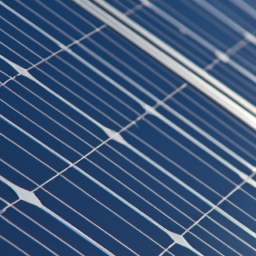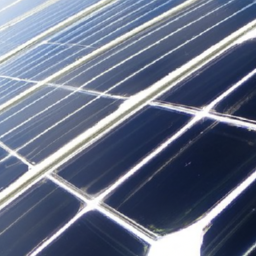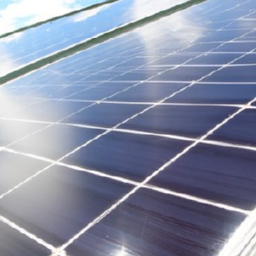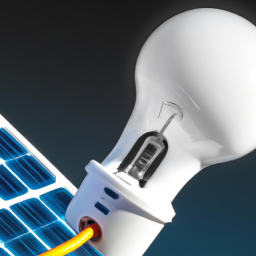In this article, you’ll learn how to determine the right size of solar generator for your needs. We’ll discuss the factors that influence the size, such as your power requirements and location. You’ll also find step-by-step instructions on how to calculate the appropriate size for your solar generator. By the end of this article, you’ll have a clear understanding of how to choose the right size solar generator to meet your energy needs. Are you considering investing in a solar generator but unsure about what size would be suitable for your needs? Don’t worry! In this article, we will walk you through the factors to consider before calculating the size of the solar generator you need. By the end of this article, you will have a clear understanding of how to determine the appropriate size for your solar generator, ensuring optimal energy production and meeting your power requirements.
Factors to consider before calculating solar generator size
Energy consumption
The first factor to consider when calculating the size of your solar generator is your energy consumption. You need to have a clear idea of how much energy you typically use on a daily basis. To do this, you can start by calculating the total wattage of all the appliances and devices you plan to power with the generator. Make a list of all the appliances and their respective wattage ratings. This information can usually be found on the appliance or in its user manual.
Once you have the total wattage, estimate your daily energy usage. This can be done by multiplying the wattage of each appliance by the number of hours you use it in a day. Add up all these values to get an estimate of your daily energy needs.
Sunlight availability
Another important factor to consider is the availability of sunlight in your area. Solar generators rely on sunlight to produce electricity, so it is crucial to assess the amount and duration of sunlight you can expect.
Start by analyzing the average sunlight hours in your location. This information can usually be obtained from weather records or online resources. Keep in mind that sunlight availability can vary depending on the season, with longer days in summer and shorter days in winter.
Backup requirements
You should also consider your backup power requirements. Determine how important having backup power is for you. If you live in an area with frequent power outages or require uninterrupted power for critical systems, you may need a larger solar generator to ensure sufficient backup capacity.
Consider the available backup options, such as battery storage or grid tie-in, and calculate your backup power needs accordingly. This will help you determine the size of the solar generator needed to meet your backup requirements.
Determining energy consumption
Calculating total wattage
To determine your energy consumption, start by making a list of all the appliances and devices you plan to power with the solar generator. Note down the wattage rating of each appliance. This information can usually be found on a label or in the appliance’s user manual.
Add up the wattage ratings of all the appliances to get your total wattage requirement. This will give you an idea of the overall power capacity your solar generator needs to have.
Estimating daily energy usage
Once you have determined the total wattage requirement, estimate your daily energy usage. This can be done by calculating the number of hours each appliance is used in a day and multiplying it by the respective wattage rating. Add up these values to get an estimate of your daily energy needs in watt-hours (Wh).
For example, if you have a refrigerator with a wattage rating of 200W and it runs for 8 hours a day, the daily energy usage would be 200W x 8 hours = 1600Wh.
Assessing sunlight availability
Analyzing average sunlight hours
To assess the sunlight availability in your area, start by researching the average sunlight hours for your location. This information can typically be obtained from weather records, solar irradiance maps, or online resources.
Knowing the average sunlight hours will give you an idea of the maximum solar energy you can harness in a day. Keep in mind that this is an average value and actual sunlight availability can vary from day to day.
Considering seasonal variations
It is also important to consider the seasonal variations in sunlight availability. Depending on your location, there may be significant differences in sunlight hours between seasons. For example, you can expect longer days and more sunlight in summer, whereas winter days tend to be shorter with less sunlight.
Taking seasonal variations into account will help you determine the size of your solar generator more accurately, as you will need to ensure enough capacity to meet your energy needs during periods of lower sunlight availability.
Calculating solar panel capacity
Accounting for panel efficiency
When calculating the solar panel capacity, it is important to consider the panel efficiency. Solar panels have an efficiency rating that indicates how effectively they can convert sunlight into electricity.
To calculate the required solar panel capacity, divide your daily energy usage by the average sunlight hours. This will give you the approximate number of wattage (W) needed from your solar panels.
For example, if your daily energy usage is 5000Wh and you have an average sunlight duration of 5 hours, you would need solar panels with a capacity of 1000W (5000Wh / 5 hours = 1000W).
Factoring in solar irradiation
Solar irradiation refers to the intensity of sunlight falling on a specific surface. It varies based on factors such as location, climate, and time of year. It is important to factor in solar irradiation when calculating the solar panel capacity.
To account for solar irradiation, multiply the required solar panel capacity (calculated in the previous step) by the solar irradiation value for your location. This will give you the adjusted solar panel capacity you need to meet your energy requirements.
For example, if the solar irradiation value for your location is 1.2, the adjusted solar panel capacity would be 1200W (1000W x 1.2 = 1200W).
Sizing battery capacity
Determining daily energy storage
To determine the battery capacity you need, start by calculating your daily energy storage requirements. This can be done by multiplying your daily energy usage (in watt-hours) by the desired number of days of backup power.
For example, if your daily energy usage is 5000Wh and you want backup power for 2 days, your daily energy storage requirement would be 10000Wh (5000Wh x 2 days = 10000Wh).
Factoring in battery efficiency
Battery efficiency refers to the ability of a battery to convert stored energy back into usable electricity. When sizing the battery capacity, it is important to consider the efficiency of the battery system you plan to use.
To factor in battery efficiency, divide the daily energy storage requirement by the battery system’s efficiency rating. This will give you the adjusted battery capacity you need for your solar generator.
For example, if the battery system you are considering has an efficiency rating of 80%, the adjusted battery capacity would be 12500Wh (10000Wh / 0.8 = 12500Wh).
Considering backup requirements
Assessing available backup options
Before finalizing the size of your solar generator, consider the available backup options. There are different ways to ensure backup power, such as battery storage or grid tie-in systems.
Battery storage systems provide backup power by storing excess energy generated during the day for use at night or during power outages. Grid tie-in systems, on the other hand, allow you to remain connected to the grid and draw power from it when your solar generator cannot meet your energy needs.
Evaluate the pros and cons of each backup option and choose the one that best suits your requirements.
Calculating backup power needs
Once you have determined the backup option you prefer, calculate your backup power needs accordingly. Consider factors such as the duration of backup required (e.g., a few hours or several days) and the criticality of the systems you want to power during an outage.
By calculating your backup power needs, you can further refine the size of your solar generator to ensure it can meet your backup requirements.
Selecting the appropriate solar generator system
Choosing between portable and fixed systems
When selecting a solar generator system, one important consideration is whether you need a portable or fixed system.
Portable systems offer flexibility as they can be easily moved and used in different locations. They are typically smaller in size and provide power for basic appliances and devices. Fixed systems, on the other hand, are typically larger and permanently installed. They can provide power for a wider range of appliances and may be more suitable for long-term or larger-scale energy needs.
Consider your specific requirements and choose between a portable or fixed solar generator system accordingly.
Evaluating system features and specifications
When selecting a solar generator system, it is important to evaluate its features and specifications.
Consider factors such as the maximum power output, battery capacity, charging time, and the number of appliances it can power simultaneously. Look for systems that offer the features and specifications that align with your energy needs and requirements.
Consulting with a professional
Seeking expert advice
If you are unsure about calculating the size of your solar generator or need assistance in selecting the appropriate system, it is recommended to seek expert advice. Consult with a solar energy professional or an experienced installer who can guide you through the process and help you make informed decisions.
Reviewing system recommendations
After seeking expert advice, carefully review the system recommendations provided. Consider factors such as the size, capacity, and performance of the recommended systems, as well as any additional features or benefits they offer.
Compare multiple recommendations and select the system that best fits your requirements and budget.
Implementing and monitoring the solar generator
Installation and setup process
Once you have selected your solar generator system, it is time to install and set it up. Follow the manufacturer’s instructions and guidelines for proper installation. If you are unsure about the installation process, it is recommended to hire a professional installer to ensure safe and efficient setup.
Regular monitoring and maintenance
To ensure optimal performance and longevity of your solar generator, regular monitoring and maintenance are essential. Keep an eye on the system’s performance, including solar panel output and battery capacity. Clean the solar panels periodically to remove any dirt or debris that may affect their efficiency.
Additionally, check the battery performance and replace it if necessary. Regular maintenance will help you identify and address any issues promptly, ensuring continuous and reliable operation of your solar generator.
Conclusion
Choosing the right size solar generator is crucial to ensure optimal energy production and meet your power requirements. By considering factors such as energy consumption, sunlight availability, backup requirements, and system features, you can calculate the appropriate size for your solar generator.
Properly sizing your solar generator will not only save costs but also avoid potential system overloading or underutilization. So, take the time to assess your energy needs, seek expert advice if needed, and select a solar generator system that best fits your requirements. Implement and monitor your solar generator to enjoy clean, reliable, and sustainable power for years to come.




